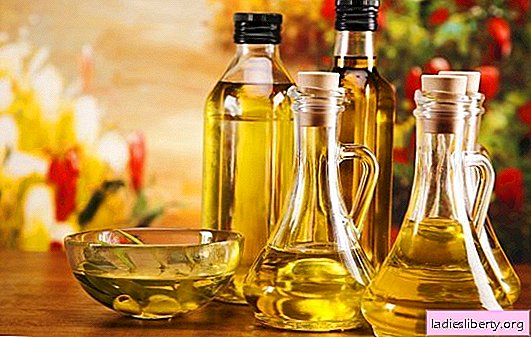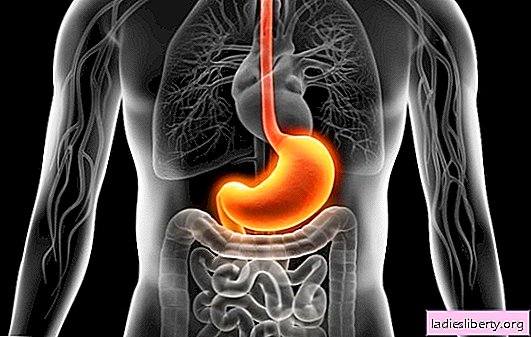
High oleic vegetable oil is extracted from sunflower seeds. The concentration of oleic acid in such a product is much higher than that of ordinary vegetable oil, and reaches the value of olive (about 80-90%). This oil has many uses in cooking, from baking to salads and snacks. It works well and has significant health benefits.
High oleic sunflower oil is also used as a dietary supplement in a separate form, as a source of multivitamins and for local treatment. No known side effects from the use of additives with a high content of high oleic oil were found, of course, if you are not allergic to the plant itself or you do not suffer from diabetes.
The benefits of high oleic sunflower oil
High oleic oil is the healthiest form of sunflower oil. It consists of fatty acids known as stearic acid, palmitic acid and oleic acid. It also contains lecithin, which provides the body with healthy triglycerides. High oleic oil can improve the level of good cholesterol due to monounsaturated fats that are present in sunflower oil. Unlike omega-3 and omega-6, omega-9 can be produced in the body, as well as consumed in food. High oleic acid foods can provide many health benefits if consumed from healthy foods. The omega-9 fatty acids that are present in sunflower oil can help in the fight against diseases of the cardiovascular system, since elevated levels of good cholesterol play an important role in preventing clogging of the arteries. Unhealthy arteries are one of the precursors of heart failure, stroke, and high blood pressure.
Oleic acid may also be beneficial for patients with diabetes or prediabetes. It can improve plasma glucose with fasting oil, as well as insulin sensitivity and blood circulation, which helps to better control diabetes and prevent other related diseases. Be careful not to overdo it with oleic acid, this is not a miracle cure. Oleic acid is associated with a high calorie content, and excessive consumption can lead to weight gain - this is a step backward for diabetics.
High oleic oil is high in vitamins. These healthy components are found in carotenoids, which provide a high concentration of vitamin E. Vitamin E is extremely good for the skin and can be placed directly on it as an oil to treat various skin diseases such as psoriasis, or to massage people with arthritis. Vitamin A, which is also found in significant quantities in high oleic oil, helps in preventing eye diseases, such as macular degeneration.
High oleic oil can help with constipation. The optimal regulation of the motor function of the digestive tract is important for the prevention of cancer, including colon cancer.
Also, test oil is often used in protein powders for fitness. High oleic oil is an excellent source of healthy fats. When you are striving for weight loss or you have a specific goal in fitness or sports, healthy fats are extremely important for muscle building and fat loss.
It is also believed that there is a correlation between monounsaturated fats and testosterone in the body. As consumption of monounsaturated fats increases, testosterone in the body also increases. It is a well-known fact that testosterone plays an important role in muscle building, which is also important for athletes and people who lead an active, healthy lifestyle.
One of the practical advantages of high oleic oil is its high heat resistance, it begins to smoke only at temperatures from 250 ° C. If such oil is used in a deep fryer, then it does not need to be changed too often. Manufacturers indicate that high oleic oil can withstand up to 5 cycles of deep-fat use without the formation of carcinogens. Also, interestingly, you can fry fish in this oil, and then chicken, and the chicken will not get the smell of fish. It is also cheaper than traditional olive, although it has the same benefits.
Harm from high oleic oil
No formal studies have found convincing side effects from consuming high oleic sunflower oil. However, it is believed that when consuming large amounts of vegetable oil, the chances of developing breast or prostate cancer increase.
If you are suffering from type 2 diabetes, you should avoid supplementation with a high content of high oleic oil, as this can create an unhealthy amount of fat and insulin in the body, which in turn can lead to diseases of the cardiovascular system and unregulated levels blood sugar.
Also, if you are allergic to ragweed and the sunflower plant itself, then you may suffer from an allergic reaction to sunflower oil. Symptoms of an allergic reaction include rash, itching, swelling, or difficulty breathing.
Dosage
High oleic oil supplements come in many forms. It can be food prepared with this oil specifically to benefit from it, or it can be in capsule form, or you can take it in a multivitamin form.
It is recommended that a person receive 30% of the daily fat intake from healthy fats. One tablespoon of high oleic sunflower oil can provide the necessary daily content of monounsaturated fats.
Also, if you are unsure, consult your doctor before taking any new supplements. However, it is safe to cook with high oleic oil if you use it no more than 17 grams per day.
High oleic oils are oils from new plant varieties. Although they are hybrids and not genetically modified plants, they are created using unconventional methods, and radioactive and toxic chemicals are used to speed up the process. What changes have occurred in seeds hybridized with radiation and toxic chemicals? We do not know.
In general, high oleic oil can be considered a recommended product until proven otherwise. However, it should be understood that abuse can entail a number of the above side effects. Until you consume more than 2 tablespoons of sunflower oil per day, you will not find any negative changes, but only win. Before using high oleic oil for medical purposes or consuming it in large quantities, consult your doctor.











